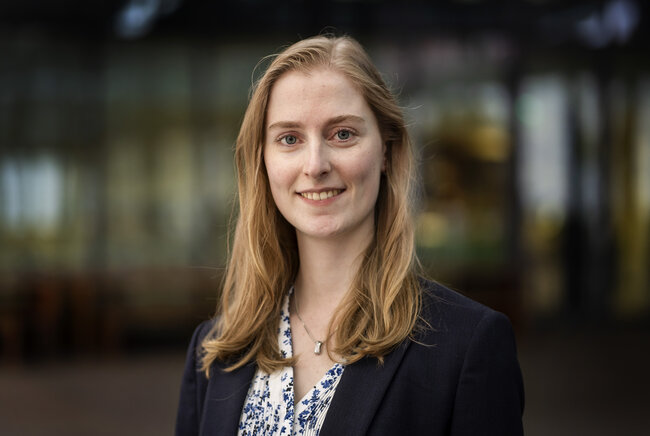Continuous biosensing using free particle motion
Alissa Buskermolen defended her PhD thesis at the Department of Biomedical Engineering on June 6th.

When a patient is being treated in the intensive care unit of a hospital, blood tests are a common occurrence. Typically, one or more vials of blood are taken, and sent to be analyzed in the centralized laboratory of the hospital. This can be challenge though as the measurement and testing process can be labor-intensive and time-consuming. In addition, a blood sample only provides a snapshot of the patient’s status, which is subject to change in the minutes and hours after a blood sample is collected. For her PhD thesis, Alissa Buskermolen explored new ways to make biosensors that can continuously monitor key biomolecules in the body, such as cytokines.
The ability to continuously monitor biological health markers would offer great opportunities to improve healthcare and personalize treatment. Of particular interest are cytokines, which are small proteins released by the human body during an immune response. The type of cytokines that are released and their concentration in the blood can say something about the severity and cause of the immune response.
Continuous monitoring
Continuous monitoring biosensors are already commercially available for glucose and are used to manage diabetes. However, the sensing technology used in these continuous glucose sensors cannot be used to monitor other biological health markers such as cytokines.
Therefore, new measurement technologies are needed. At TU/e, a sensor concept for continuous monitoring was proposed called Biosensing by free Particle Motion (f-BPM), which forms the basis of the PhD research of Alissa Buskermolen.
The particles used in the f-BPM sensor are beads of only a few micrometres in diameter, which is about 100 times smaller than a single hair. As they are so small, many of these individual particle sensors fit in the biosensor.

The particles move freely near a flat sensor surface. Both the particles and the surface are covered in binders, which are molecules that can specifically detect and bind to the cytokine or other health marker we want to measure.
When the cytokine of interest is not present in the sample, the particles will continue to move freely. However, when the sample does contain the cytokine, it can bind to the binders on both the particles and the sensor surface, and the particle will temporarily “stick” to the surface.
Particles on camera
The two-dimensional motion of hundreds to thousands of particles is observed simultaneously using a simple microscope and video camera. The specific motion of the particles – how much they move, how often they bind – gives information about the presence and the concentration of the cytokine of interest.
With her research, Buskermolen – in collaboration with her colleagues – has taken a first step towards dynamic immunomonitoring, by demonstrating the continuous monitoring of the cytokine TNF-alpha with the f-BPM technology.
In the future, this research could support the development of continuous monitoring sensors for applications in fundamental research, for the monitoring of industrial processes and the environment, and for the monitoring of patients in critical care.
Title of PhD thesis: Continuous biosensing by free particle motion - a gateway to dynamic immunomonitoring. Supervisors: Menno Prins and Arthur de Jong.